Filter templates development
Sometimes you may need to create a template that changes color parameters of a user photo, applies neural filters to it, adds semi-transparent graphic layers with blending modes, and the like, but does not resize or crop a photo.
Frame templates cannot be used to implement our idea, as we do not want to crop or resize a user photo and want our template to be nothing more than a ‘filter’ for a user photo.
The Template Creator makes it possible to create a special type of templates for such purposes - filter templates. These templates adapt to a user photo size and orientation. In addition, compared to sticker templates (that also adapt to a user photo size), filter templates allow you to employ a bigger number of different artistic means.
| Original photo | Photo processed with a filter template |
|---|---|
 |
 |
Filter templates have a number of peculiarities that make them different from other types of templates:
- Original and resulting photos always have the same size. A user photo is never cropped or resized.
- You can use structural elements that are typical of templates of other types: different types of user photo regions, graphics, stickers, etc.
- If a template uses graphic layers, they will be upscaled or downscaled to fit the size of a user photo without keeping their proportions constrained.
- Filter templates need to have a particular orientation only in case they use specifiс graphics that depends on a user photo orientation.
Creating a project in the Template Creator
Open the Template Creator when Photoshop is already launched (if Photoshop is not running, it will start automatically when you open the Template Creator). Go to the File menu and select Create Project:
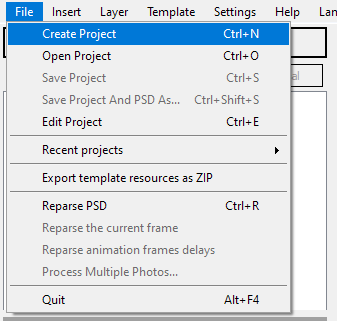
A dialog will open, where you need to fill the parameters of your template and save it in a selected directory. Select ‘Filter’ in ‘Template type’, then select ‘New PSD Document’ and specify the template orientation (if there is no need to use different graphic layers for user photos with different orientations, select Universal Orientation).
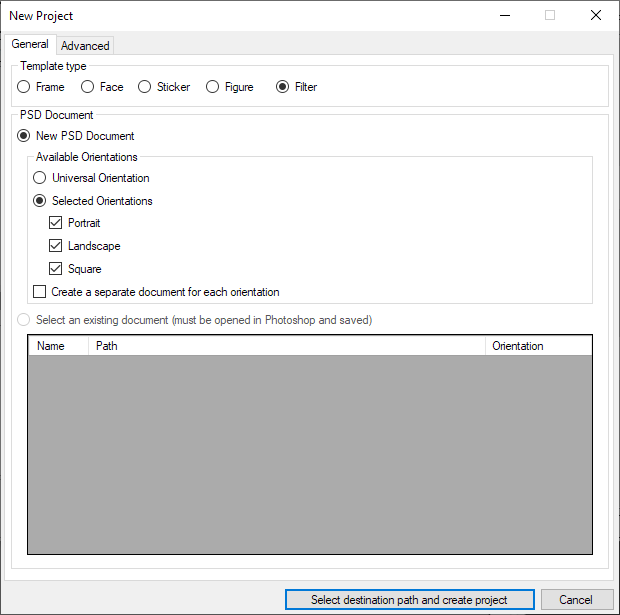
When you are done with the dialog, the Template Creator will generate a new PSD file in Photoshop. This file is associated with a new project and has the correct structure of layers:

If there are open documents in Photoshop, the project creation dialog will allow you to make a project based on an existing document:
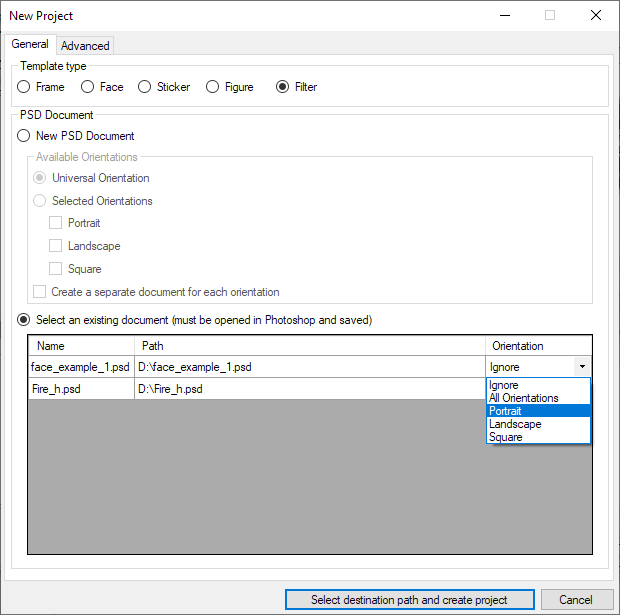
Select one or several PSD documents from the list and specify a desired orientation for them.
You can change the binding of a PSD document to the project at any time by clicking File > Edit Project (CTRL + E). This dialog also lets you change the project type.
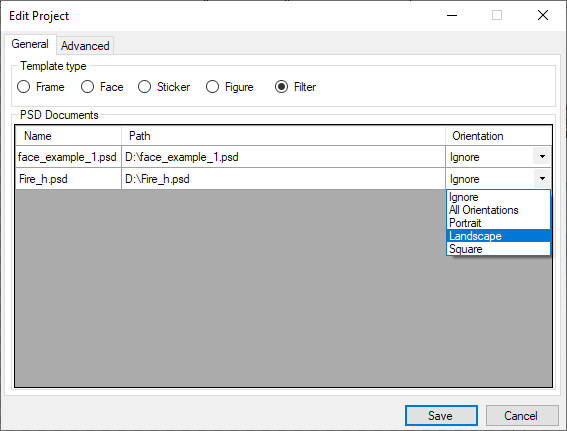
More information about the Template Creator and how to test ready templates can be found in this section.
User photo region
Filter templates can contain user photo regions of any type: frame regions, face regions or figures.
In Filter templates, as well as in other types of templates the smart object — SQ Frame Region (Do Not Delete!) [uv] is used for positioning a user photo. You can also place test photos inside the Smart Object to try them with your template in Photoshop.
Filter templates support adding several frame user photo regions which you can place at your will. However, you should bear in mind that in this type of project the canvas size adapts to the size of the input user photo and ignores the canvas size specified in Photoshop.
When processing several photos with different image indexes, the canvas size will be equal to the size of the photo which parameter Do Not Upscale is set to true.
The Template Creator lets you flip smart objects of the face region horizontally or vertically.
To flip a smart object of the face region, use standard Photoshop tools. For example, go to Edit menu > Transform > Flip Horizontal / Vertical.
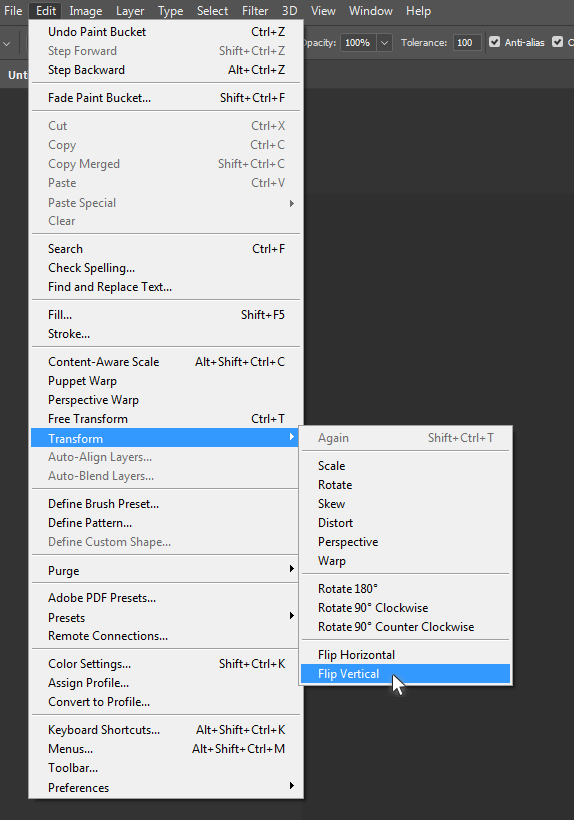
When you reparse your Photoshop document (PSD), you tell the Template Creator that one or several face regions have been flipped. Later, when you process test photos, make notice that images placed into a specified face region are flipped horizontally or vertically.
Flipping works in the same way for all user photo regions regardless of the template type.